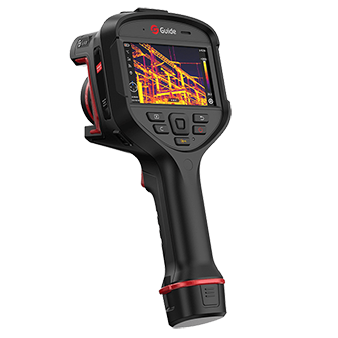
# Thermographic Camera Applications in Modern Technology
## Introduction to Thermographic Cameras
Thermographic cameras, also known as infrared cameras or thermal imaging cameras, are devices that detect infrared radiation and convert it into visible images. These cameras have become increasingly important in various fields due to their ability to visualize heat patterns and temperature differences that are invisible to the naked eye.
## Industrial Applications
### Predictive Maintenance
One of the most significant uses of thermographic cameras in industry is for predictive maintenance. These cameras can detect overheating components in machinery before they fail, allowing for timely repairs and preventing costly downtime.
### Building Inspections
Thermographic cameras are invaluable tools for building inspections, helping to identify:
– Heat leaks in insulation
– Moisture intrusion
– Electrical faults
– HVAC system inefficiencies
## Medical and Healthcare Uses
### Fever Screening
During health crises like the COVID-19 pandemic, thermographic cameras became essential for mass fever screening in public spaces. They allow for non-contact temperature measurement of multiple individuals simultaneously.
### Medical Diagnostics
In healthcare, thermal imaging assists in:
– Detecting circulatory problems
– Identifying inflammation
– Monitoring wound healing
– Breast cancer screening (as an adjunct to other methods)
## Security and Surveillance
Thermographic cameras have revolutionized nighttime surveillance by providing clear images regardless of lighting conditions. They are particularly useful for:
Keyword: thermographic camera
– Border security
– Search and rescue operations
– Law enforcement activities
– Wildlife monitoring
## Automotive Industry Applications
Modern vehicles increasingly incorporate thermographic technology for:
– Night vision systems
– Pedestrian detection
– Driver assistance features
– Battery monitoring in electric vehicles
## Scientific Research
Researchers utilize thermographic cameras in various scientific fields:
– Climate change studies
– Wildlife behavior observation
– Material science research
– Volcanic activity monitoring
## Future Developments
As technology advances, we can expect thermographic cameras to become:
– More affordable
– Higher resolution
– Smaller in size
– Integrated with AI for automated analysis
The applications of thermographic cameras continue to expand as engineers and scientists discover new ways to utilize this powerful imaging technology. From industrial maintenance to medical diagnostics and beyond, thermal imaging is proving to be an indispensable tool in our modern technological landscape.
